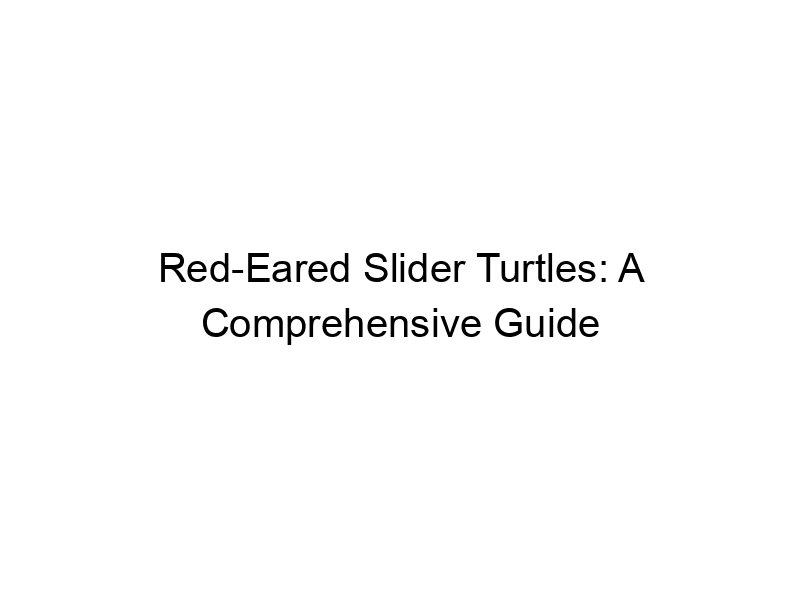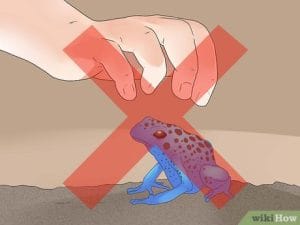Red-Eared Slider turtles are captivating creatures, and this comprehensive guide will delve into every aspect of their fascinating world. This detailed exploration will cover their habitat, care, behavior, and conservation status, offering valuable insights for both novice and experienced reptile keepers. You’ll learn about their unique characteristics, the challenges of responsible ownership, and the importance of contributing to their conservation. Prepare to be amazed by the Discover the Beauty of Red-Eared Slider Turtles!
Red-Eared Slider turtles (Trachemys scripta elegans) are semi-aquatic turtles belonging to the Emydidae family. They are easily identified by the distinctive red stripes or streaks behind their eyes, hence their name. These turtles are native to the southeastern United States but have become widely distributed across the globe through the pet trade. Their popularity stems from their relatively low maintenance requirements,
affordability, and appealing appearance.
Geographic Distribution and Habitat
Originally inhabiting rivers, lakes, ponds, and marshes in the southeastern United States, Red-Eared Sliders have been introduced to many other countries. They thrive in slow-moving bodies of water with abundant aquatic vegetation and basking sites. These basking sites are crucial for thermoregulation, as they help the turtles maintain their body temperature.
Physical Characteristics and Behavior
Appearance and Size
Young Red-Eared Sliders possess bright green carapaces (top shells) with yellow stripes. As they mature, the carapace typically darkens to a brownish or olive-green hue, while the plastron (bottom shell) remains yellowish. Adult sizes vary, with males generally smaller than females. Females can reach carapace lengths of up to 12 inches.
Diet and Feeding Habits
Red-Eared Sliders are omnivores, consuming a varied diet that includes both plants and animals. Their diet should consist of commercial turtle pellets supplemented with fresh vegetables, fruits, and occasional insects or small fish. A balanced diet is vital for their health and longevity. Avoid overfeeding, as this can lead to obesity and other health issues.
Lifespan and Growth Rate
With proper care, Red-Eared Slider turtles can live for 20 to 30 years, or even longer. Their growth rate depends on several factors, including diet, temperature, and genetics. Younger turtles grow much faster than adults.
Caring for Red-Eared Slider Turtles
Tank Setup and Requirements
Housing Red-Eared Sliders requires a spacious tank or aquarium with appropriate water parameters. The tank should be large enough to accommodate the turtle’s adult size, ideally with a basking area. The water needs to be filtered and regularly changed to maintain cleanliness and prevent bacterial growth. A good filter removes waste and keeps the water clear, preventing diseases.
Water Quality and Maintenance
Maintaining optimal water quality is paramount to the turtle’s health. Regular water changes, using dechlorinated water, are essential. Water temperature should be maintained within the appropriate range, usually between 75 and 80°F. The use of a thermometer and a heater is highly recommended.
Basking Areas and Lighting
A basking area with a heat lamp is crucial for thermoregulation. The lamp provides warmth, allowing the turtle to bask and digest food properly. UVB lighting is also essential for calcium absorption, which is vital for shell health and overall well-being. Insufficient UVB can lead to metabolic bone disease (MBD).
Red-Eared Slider Turtle Health and Common Problems
Diseases and Health Issues
Red-Eared Sliders can be susceptible to various diseases, including shell rot, respiratory infections, and eye infections. Proper hygiene, a balanced diet, and regular checkups by a veterinarian specializing in reptiles can help prevent these issues. Early detection and treatment are crucial for successful outcomes.
Signs of Illness and Treatment
Signs of illness can include lethargy, loss of appetite, unusual swelling, or changes in shell appearance. If you notice any of these signs, seek immediate veterinary attention. Treatment may involve medication, dietary changes, or environmental adjustments.
Preventing Disease in Your Turtle
Regular tank cleaning, proper water filtration, a balanced diet, and maintaining appropriate environmental conditions are essential for disease prevention. Avoid overcrowding and ensure your turtle has enough space to thrive.
Breeding and Reproduction
Breeding Conditions and Requirements
Breeding Red-Eared Sliders requires specific conditions, including proper temperature gradients and photoperiods (light cycles). Successful breeding usually occurs during warmer months, with the female laying eggs in a suitable nesting site. Successful breeding hinges on mimicking the turtles’ natural environment as closely as possible.
Incubation and Hatching
Eggs are incubated at a specific temperature, which influences the sex of the hatchlings. Incubation times vary, with hatchlings emerging after several months. The hatchlings are small and vulnerable, requiring careful attention and proper care.
Raising Young Turtles
Raising young Red-Eared Sliders requires a similar setup to adult turtles, but on a smaller scale. Their diet needs to be adjusted to their size and developmental stage. Regular monitoring and careful handling are crucial to ensure their survival and health.
Red-Eared Slider Turtles and the Environment
Conservation Status
While not currently classified as endangered, Red-Eared Sliders face threats from habitat loss, pollution, and the pet trade. It’s essential to support responsible breeding and conservation efforts.
Impact of Invasive Species
In many parts of the world where they’ve been introduced, Red-Eared Sliders are considered invasive species, outcompeting native turtles for resources. This highlights the importance of responsible pet ownership and the prevention of accidental releases.
Ethical Considerations of Keeping Red-Eared Sliders
Before acquiring a Red-Eared Slider, carefully consider the long-term commitment involved. Ensure you have the necessary resources, knowledge, and time to provide proper care for the animal’s entire lifespan.
Legal Aspects and Regulations
Laws and Regulations Governing Ownership
Laws and regulations concerning the ownership of Red-Eared Sliders vary by region. Some areas may require permits or licenses, while others may have restrictions on their sale or trade. Research local laws before acquiring a turtle.
Responsible Pet Ownership
Responsible pet ownership goes beyond simply providing food and shelter. It involves understanding the animal’s needs, ensuring its health and well-being, and contributing to conservation efforts. Avoid buying from irresponsible breeders or suppliers.
Avoiding the Pet Trade’s Negative Impacts
Supporting the pet trade can unintentionally contribute to habitat destruction and the spread of invasive species. Consider adopting a rescued turtle instead of buying from breeders.
Comparing Red-Eared Sliders to Other Turtle Species
Differences between Red-Eared Sliders and Other Common Turtle Species
Several turtle species share similar appearances with the Red-Eared Slider. Knowing the differences is essential for accurate identification and proper care. For example, Yellow-bellied Sliders have a yellow plastron, while Cumberland Sliders lack the prominent red stripes. Careful observation of markings and size is crucial.
Choosing the Right Turtle Species for You
Different turtle species have different care requirements. Choosing the right species depends on your experience, resources, and commitment level. Research thoroughly to ensure you’re prepared for the long-term responsibilities of pet ownership.
Frequently Asked Questions
What is the average lifespan of a Red-Eared Slider turtle?
With proper care, a Red-Eared Slider can live for 20-30 years, or even longer.
How large do Red-Eared Sliders get?
Adult females can reach carapace lengths of up to 12 inches, while males are typically smaller.
What do Red-Eared Sliders eat?
They are omnivores, consuming a diet of commercial turtle pellets, fresh vegetables, fruits, and occasional insects or small fish.
What kind of tank setup do Red-Eared Sliders need?
They need a spacious tank with a basking area, a filter, a heater, and UVB lighting.
Are Red-Eared Sliders legal to own everywhere?
Laws and regulations vary by region. Check local laws before acquiring one.
What are some common health problems in Red-Eared Sliders?
Shell rot, respiratory infections, and eye infections are common issues, often related to poor water quality and diet.
Can Red-Eared Sliders be kept outdoors?
In suitable climates with appropriate enclosures, outdoor keeping might be possible, but careful consideration of weather and predator protection is paramount.
Final Thoughts
Red-Eared Slider turtles are fascinating and engaging creatures, but their care requires significant commitment. Understanding their natural habitat, dietary needs, and susceptibility to diseases is paramount to ensuring their well-being. By providing proper care, you can contribute to the long-term health and happiness of your Red-Eared Slider, while also appreciating their incredible beauty and unique characteristics. Remember, responsible ownership includes understanding the ethical and legal implications of keeping these animals and considering the impact on both the environment and native species. If you are prepared for the long-term commitment of providing a healthy and enriching environment, then the rewards of sharing your life with a Red-Eared Slider will be immeasurable. Embrace the beauty and wonder of these remarkable creatures – they truly deserve our care and respect. Start your journey towards responsible pet ownership today!




